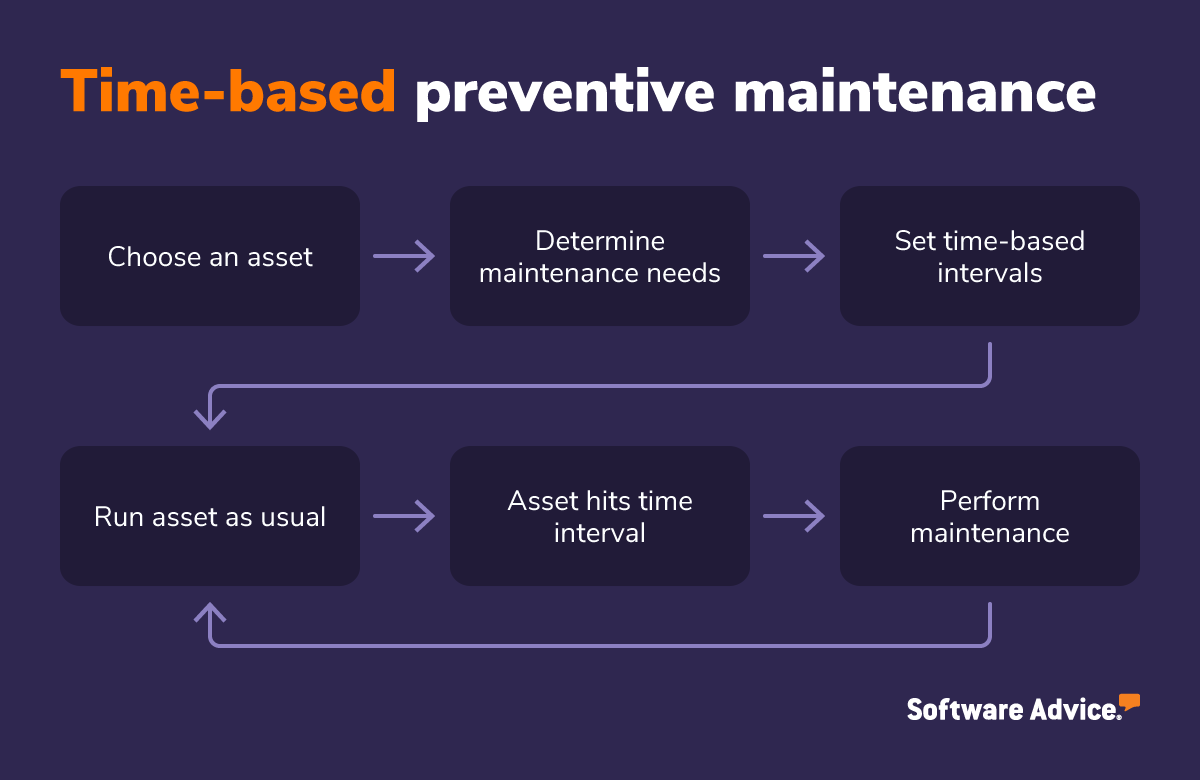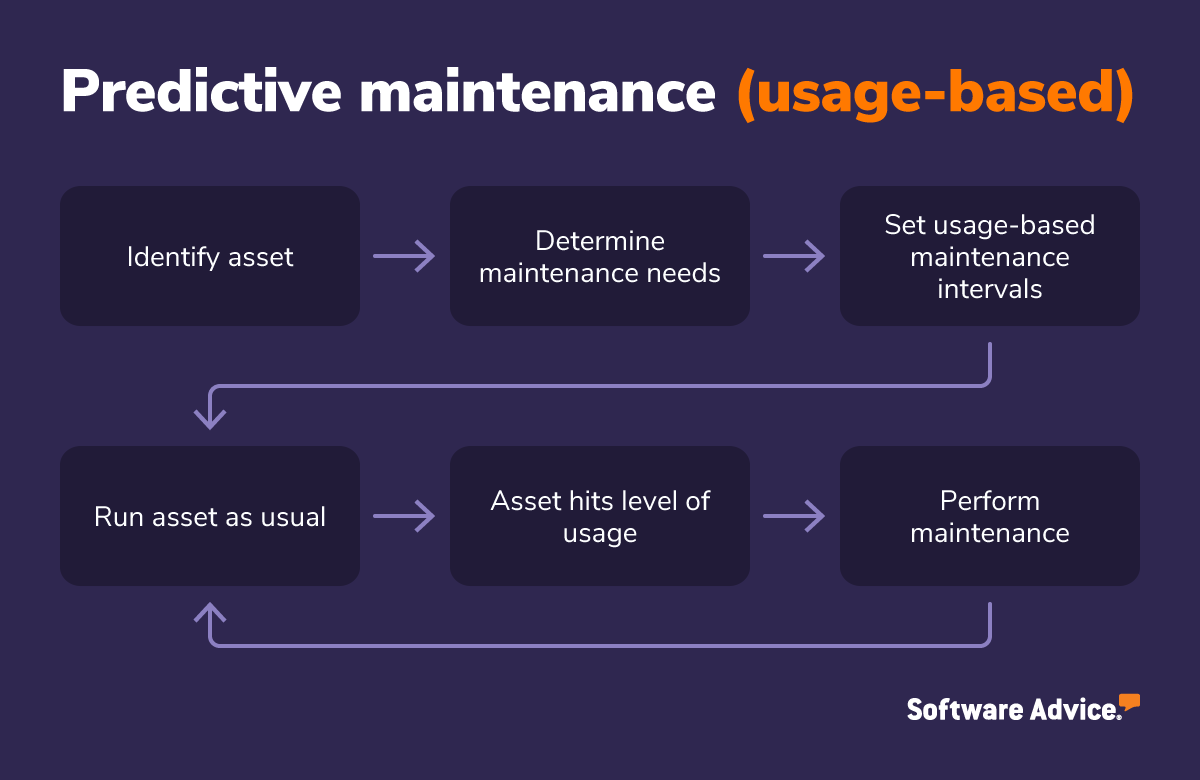What’s the Difference Between Predictive Maintenance and Preventive Maintenance?
If you don’t know the difference between predictive maintenance vs preventive maintenance, just think of your car’s warranty.
Warranties often come with timing and usage guidelines to cover whatever comes first: 8 years or 80,000 miles, for example. The different guidelines ensure the warranty accounts for cars that are on the road constantly as well as ones that are driven less frequently.
Apply that concept to maintaining machinery, and it’s easier to understand the difference between preventive maintenance (PM), typically a time-based approach, and predictive maintenance (PdM), which is a usage-based approach.
It’s especially important to choose the right method when you’re a small business leader who relies on machinery for daily operations, such as those in the medical, manufacturing, or construction industries. Minimizing unplanned downtime is a priority for the operations staff you supervise, and below we’ll show you why predictive maintenance is more likely to help you succeed.
What is preventive maintenance, and what is predictive maintenance?
Describing the difference between preventive and predictive maintenance can be tricky because technically, predictive maintenance is a type of preventive maintenance.
Preventive maintenance, also known as preventative maintenance or proactive maintenance, is a method businesses use to keep equipment in working order. Scheduled based on time or usage, PM helps businesses manage preventive care of their assets, as opposed to corrective maintenance or reactive maintenance where maintenance is performed only when needed.
Predictive maintenance is simply another term for usage-based preventive maintenance. While time-based PM involves the scheduling of maintenance tasks based on the time of their last occurrence, predictive maintenance involves the scheduling of jobs based on real-time usage data from equipment sensors.
To distinguish between the two methods we’re comparing, we’ll be referring specifically to time-based preventive maintenance from here on out. Below, we’ve provided an example of what a time-based preventive maintenance workflow can look like.

Example of a time-based preventive maintenance workflow
In contrast, here’s an example of a predictive maintenance workflow.

Example of a predictive maintenance (usage-based) workflow
Though the main difference between the two boils down to when maintenance tasks are performed, there are some advantages and disadvantages to each method. We’ll walk you through those next.
What are the pros and cons of time-based preventive maintenance?
Please note that the following is not meant to be prescriptive. Your preventive maintenance program will be specific to the needs of your small business, and so the method that works best for someone else might not be what works best for you.
Also, the overall benefits of preventive maintenance apply to both predictive maintenance and time-based preventive maintenance. With either method, you’re looking at more efficient facility management, a safer working environment for your employees, fewer interruptions to day-to-day operations, and a higher ROI compared to corrective or reactive maintenance.
In terms of predictive maintenance vs preventive maintenance, let’s start with some advantages that are unique to time-based preventive maintenance.
Scheduling is easy. If you’re scheduling an annual inspection, you can stick with an easy-to-remember date (such as the first of the month) or the same date each year.
Making predictions is simple. There’s no question as to when you’ll be due for maintenance again, since planned maintenance follows the same time-based interval.
Planning can be based on seasons. For example, fleet managers can schedule specific PM tasks such as changing tires or adding antifreeze to their washer fluid reservoirs at the start of winter in their area.
Although there’s just one disadvantage of time-based preventive maintenance, it is significant. Because time-based preventive maintenance is not based on usage, it can lead to unnecessary maintenance or even under-maintenance.
If you’re uncertain of which method you need, we recommend starting out with time-based preventive maintenance. Then, you can switch to usage-based once you have a better understanding of how frequently your assets need to be maintained.
What are the pros and cons of predictive maintenance?
Keeping in mind that predictive maintenance is performed only when needed and is scheduled based on usage, the advantages of predictive maintenance are as follows:
It’s more cost-effective than time-based preventive maintenance. There isn’t the risk of performing maintenance simply because it’s been scheduled to occur at a certain time or date, thus reducing labor and material costs.
You can wait longer between maintenance tasks. You can hold off on maintenance for assets that are not used as heavily or frequently, resulting in even less downtime than time-based preventive maintenance
It’s easier to tailor to specific assets. Predictive maintenance requires you to pay more attention to the specific maintenance needs of each asset and to indicators such as wear and tear.
Predictive maintenance also has one main disadvantage. Because a predictive maintenance strategy depends on condition monitoring, it requires more intensive training of your maintenance team, which could mean higher costs up front. Also consider the added costs of the hardware needed to stream real-time data to a computerized maintenance management system (CMMS).
Why should you consider predictive maintenance over time-based preventive maintenance?
Return with us for a moment to our car warranty example. We hope it drives the point home that usage-based intervals work better for some machines, such as a car that’s racking up miles, while time-based makes more sense for machines that are used sparingly, or whose wear and tear is more consistent or predictable.
You should also elect time-based maintenance for preventive maintenance tasks that are state or federally mandated. For example, if you work for a manufacturer that operates a boiler, such as a brewery or distillery, your state licensing and regulation department likely requires a boiler inspection every one or two years. In this case, we aren’t suggesting you monitor the condition of your boiler on your own to determine when an inspection is needed.
But if we’re comparing the two methods, predictive maintenance is more likely to help you succeed because of the way it is tailored to your assets. Even if implementing a predictive maintenance program requires more training, PdM software keeps notes about asset condition in one centralized hub so your team has the most accurate data possible when making decisions.
Key considerations before implementing a predictive maintenance program
As we mentioned earlier, you can always start out with time-based maintenance and switch to predictive maintenance once you’re more comfortable with condition monitoring. Here are some other considerations to keep in mind before implementing a predictive maintenance program:
Identify how many assets lend themselves to predictive maintenance because they’re not subject to time-bound state or federal inspections.
Determine whether you have the right tools in place to gauge usage for your assets, such as equipment sensors, or whether such tools are within your budget.
Research preventive maintenance software platforms to determine the best fit for your team.
You can use all the above considerations to present a business case to your organization’s leadership by discussing the benefits and potential cost savings of a predictive maintenance program.
For more guidance on developing your own preventive maintenance program, check out our resources on CMMS.